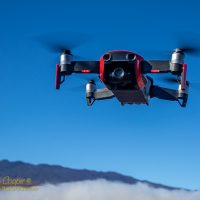By now anyone reading the news will know that a drone sighting shut down a major metropolitan airport just days before Christmas. London’s Gatwick airport was intermittently closed to arrivals and departures during the busiest travel season of the year, leaving up to 140,000 travelers stranded and scrambling to make alternate travel arrangements.

What you may not have heard is that there may never have been a drone involved. This may have stemmed from one bad sighting and a classic case of mass hysteria leading to further drone sightings.
Even worse, authorities looking for anyone to blame arrested and detained an innocent couple for 36 hours. They were eventually released after no evidence was found and an alibi verified. During that time the couple was vilified by name in some major media outlets. The only saving grace here is that the couple is now likely to receive a substantial sum from those newspapers under British libel laws.
Meantime there is minimal evidence a drone was ever present, no photographs or video, just a string of witness sightings. This is despite the British infatuation with security cameras, none of the airport’s many cameras captured video of a drone in the area.
Sunday Sussex police chief Jason Tingley admitted to the BBC that all they had was reported sightings and that there was the possibility that no drone was ever present. Other authorities were quick to walk back that admission insisting there was a drone and that they continue to search for the perpetrator.
We are left with too many unanswered questions… Was there ever a drone present? Was the original sighting correct, but the later sightings the result of confirmation bias? If there was a drone was it malicious and intending to harm? Simply taking some photos along the airport fence? (Both criminally irresponsible and illegal, but little actual threat to airport operations.) Will we ever really know now that the issue has become politically sensitive?
The episode does highlight the public’s apprehension with drone technology. The perceived capabilities of a drone, real or imagined, seem to resonate with the human psyche, triggering some primal fear. Examples of hysterical overreaction to drones have become common of late.

There is no question that drones are a potentially disruptive technology. The tech is now inexpensive and widely available. The odds of encountering a drone in daily life has gone from extremely rare to uncommon.
Most commercially available drones are now equipped with some form of geofencing technology, software safeguards that disallow flights into restricted airspace around airports or other no-fly zones. Of course this tech can be bypassed by a knowledgeable hacker, but it does make accidental or deliberate intrusions unlikely by the vast majority of drone users.
Enthusiasts and photographers seeking to take advantage of the opportunities drones represent face an increasing restrictions on where one can fly. Various local authorities have placed ever more restrictions on drone use on various public lands, from parks to forests.
It appears that these local authorities, when faced with the entire concept of drones, instinctively want to ban the technology without any real justification. When asked for justification they will cite news reports such as those we have seen surrounding the Gatwick incident… An incident badly reported and sensationalized beyond any recognition of the true issues.
As the technology weaves it’s way into everyday life these fears may subside. It may be a while before the tech stabilizes and people learn just what it can, and cannot do. It may be a while before drones become just another part of the landscape and unlikely to attract attention as they do now.

